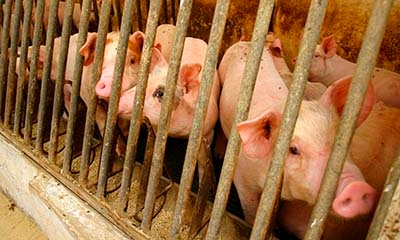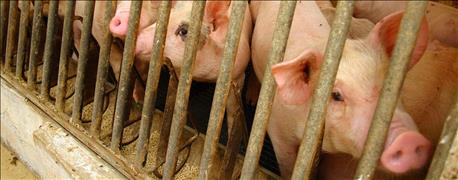October 14, 2016

To help determine if drinking water quality is enough of a priority in your operation, ask yourself the following question, says Mark Whitney, Ph.D., swine technical sales specialist with Purina Animal Nutrition.
“Would you drink the water in your pig barn?” Whitney asks. “If you can’t say you would, then maybe water quality could use more attention on your operation.”
Water quality can impact how much your pigs are drinking, and water intake is directly correlated to feed intake. Keeping your water supply clean and functioning well is the foundation of a successful nutrition program.

Water quality can impact how much your pigs are drinking, and water intake is directly correlated to feed intake. (Photo: Ingram Publishing/Thinkstock)
“Research from the Purina Animal Nutrition Center has shown that performance has exponential impacts as pigs grow,” Whitney says. “The same is true for lags in performance, which have exponential negative impacts on future development. Don’t let poor water quality be a reason your pigs experience a lag in feed intake and performance.”
Regular testing of your water system and its contents can arm you with information when troubleshooting a health issue. Here are some things to consider.
-Physical observations: Note the color, odor, flavor and clarity of the water. Water that looks cloudy, frothy, has a color, an odd taste or an odor should be tested.
-pH: An acceptable range is between 6.5 and 8.5. Levels higher or lower could affect water treatment function or cause corrosion of the water system.
-Chloride: Levels greater than 500 ppm can cause a brackish taste that could deter pigs from drinking.
-Buildup – Minerals found naturally in groundwater can cause buildup inside pipes, restricting flow and creating an environment for bacterial growth. Bacteria and other organisms can develop into biofilms, a buildup of organic material inside pipes that can be hard to detect and get rid of.
-Microbes require few nutrients to grow, and they thrive on the kinds of supplements typically used in pork production such as electrolytes, vitamins and organic acids. Even acidic cleaning products used for removing mineral deposits can support microbial growth.
-High numbers of microbes can indicate contamination from an outside source. Ideally, water samples should contain fewer than 100 total bacteria and fewer than 50 coliform bacteria per milliliter sample.
-Iron: At 2-3 ppm, iron can promote bacterial growth or contribute to mineral deposits inside pipes. At 5 ppm, iron can inactivate certain drugs including the antibiotic oxytetracycline. At 10 ppm or greater, it can inhibit water intake.
Source: Purina Animal Nutrition LLC.
You May Also Like




